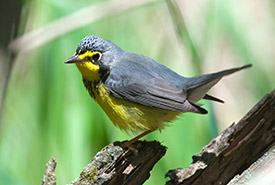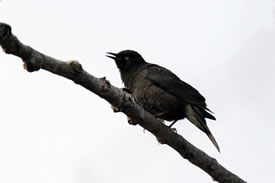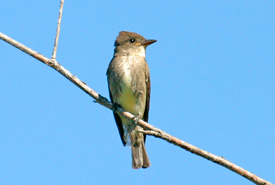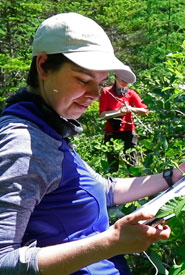A summer for the (at-risk) birds

Canada warbler (Photo by Gerald Deboer)
I groggily open my eyes, and by the faint moonlight filtering in through my tent, I find my phone to check the time: 4:29 a.m. — one minute before my alarm is set to go off. I turn it off before the artificial sound interrupts the chorus outside: a hermit thrush begins its crystal song, while a northern parula answers with a zipper-like trill. No wind and no drizzle mean it’s a perfect morning to go birding.
After we pack the tents into the truck, my colleague Sydney and I are on our way to our first site of the day: a swamp on the gorgeous Musquodoboit River in Nova Scotia. We pull out our clipboards and binoculars just as the sun crests the horizon and start our search for Canada warbler, olive-sided flycatcher and rusty blackbird — all species at risk. Working with researchers from Dalhousie University in Halifax, we’re here to figure out where the birds breed and what habitat characteristics are important for them to breed successfully.

Rusty blackbird (Photo by Jeff Nadler)
Over the course of the summer, we visit more than 200 unique sites while criss-crossing all over mainland Nova Scotia, from Yarmouth to Guysborough to Amherst, and venture across the border into New Brunswick for a few especially promising areas. The habitat we’re looking for — forested wetlands — is soggy, muddy and sometimes nearly impossible to walk through, thanks to dense alder undergrowth and hidden sinkholes.
But the challenges we face are nothing compared to the challenges that face these birds in their wintering grounds in Central/South America and the United States, and in their breeding grounds in Canada. Here in Canada, the threats are mainly development and pollution. Additional threats include: the thinning out of dense undergrowth, which removes the structure that Canada warblers depend on to forage; clearcutting, which invites predators that feast on olive-sided flycatcher eggs; and pollution, which can lead to the rusty blackbird eating insect larvae that is contaminated with mercury.

Olive-sided flycatcher (Photo by R. Hocken)
Now, more than ever, it’s important to find out exactly what these birds need to survive, and where we need to focus our efforts to protect and conserve their habitat. Fortunately, the Nature Conservancy of Canada (NCC) has protected habitat along the Musquodoboit River, and it’s clear it’s a high-quality area. By 11 a.m., we’ve amassed a list of achievements:
- six Canada warblers spotted (including two breeding pairs!)
- some two-dozen mosquito bites
- one leg soaked to mid-thigh with muddy water, courtesy of a sinkhole
We emerge from the swamp, dirty, exhausted and victorious. Finding so many Canada warblers in such a small area speaks volumes for the quality of the habitat and is promising for the species that rely on it.
Later, when we return after the breeding season to inspect the trees, shrubs, mosses and soil, we’re certain we’ll be able to collect information on what high-quality, bird-friendly habitat like this looks like. With one of our goals accomplished today, we high-five and hope for the same luck tomorrow and that my mud-soaked boot will dry out by morning.


